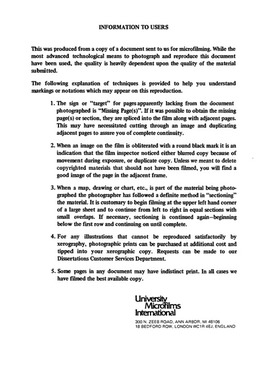| dc.contributor.author | Moussa, Mohamed Mahmoud, | en_US |
| dc.date.accessioned | 2013-08-16T12:28:03Z | |
| dc.date.available | 2013-08-16T12:28:03Z | |
| dc.date.issued | 1980 | en_US |
| dc.identifier.uri | https://hdl.handle.net/11244/4728 | |
| dc.description.abstract | In the rolling and static techniques, the corrosion rate is measured due to the effect of each temperature and time of exposure separately. | en_US |
| dc.description.abstract | The corrosion rate is measured under the above conditions by the weight loss technique. The corrosion cells are loaded with two flat coupons in each cell. Mild steel (1018) specimens are immersed in the drilling fluids under different types of fluid regimes. The weight loss of the specimen before and after the run during a certain period of time is a measure of the corrosion rate. The corrosion rate is minimized by adjusting the pH value and the formulation of the fluid by adding caustic soda when necessary. Corrosion rates are measured using different techniques--the flow loop, rolling and static. A new mag-corrosion cell has been incorporated in the loop to combine the rotational motion and the linear flow of the fluids, simulating the bottomhole conditions. Correlations between techniques under different conditions are included. The corrosion rate measured by the flow loops was a result of exposing the specimens at two different temperatures (hot and cold). During the test period, the coupons experience the change in temperature from room temperature up to 450(DEGREES) F. Thus, the corrosion rate measured is due to the change of temperature from room temperature to the maximum in the test time. | en_US |
| dc.description.abstract | Problems associated with geothermals and deep well drilling can be minimized by the proper choice and control of the drilling fluid formulation. High bottomhole temperature gellation of conventional muds has been avoided by employing the sepiolite (sea mud) systems. Sepiolite is a fibrous, magnesium-rich clay mineral. Several formulations of muds are tested at elevated temperature ranges from room temperature to 500(DEGREES) F. Also, the pH value, flow rate and pressure were changed to examine their effect on mud stability. The drilling operation is simulated in the laboratory by two flow loops. | en_US |
| dc.description.abstract | Corrosion is higher when using the mag-corrosion cell than when using the linear flor when both are exposed under the same conditions. Static technique rates are less than rolling. Critical pH values are determined for specific drilling fluids. | en_US |
| dc.format.extent | xi, 148 leaves : | en_US |
| dc.subject | Engineering, Petroleum. | en_US |
| dc.title | New techniques to measure and control corrosion of drilling fluids at elevated temperature. | en_US |
| dc.type | Thesis | en_US |
| dc.thesis.degree | Ph.D. | en_US |
| dc.thesis.degreeDiscipline | Mewbourne School of Petroleum and Geological Engineering | en_US |
| dc.note | Source: Dissertation Abstracts International, Volume: 41-03, Section: B, page: 1075. | en_US |
| ou.identifier | (UMI)AAI8018931 | en_US |
| ou.group | Mewbourne College of Earth and Energy::Mewbourne School of Petroleum and Geological Engineering | |
